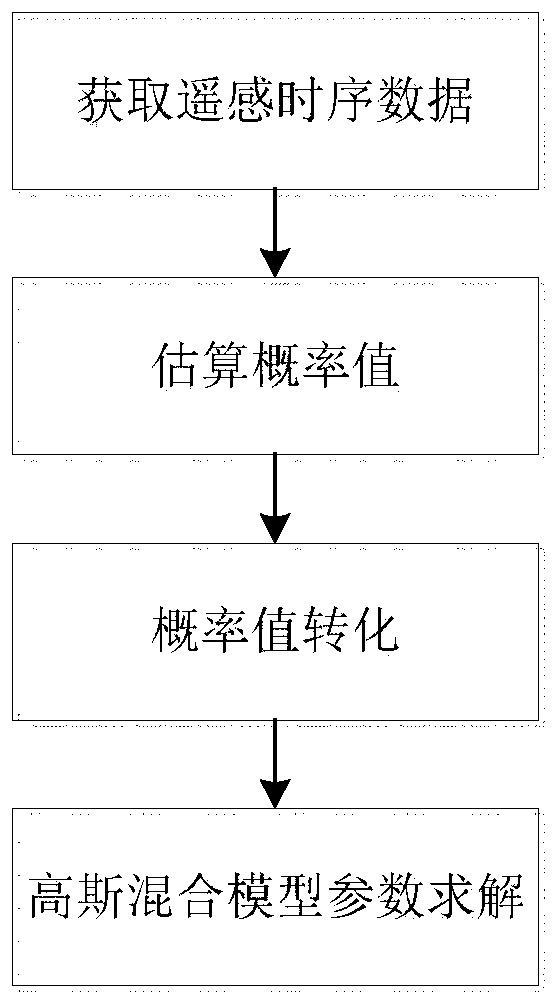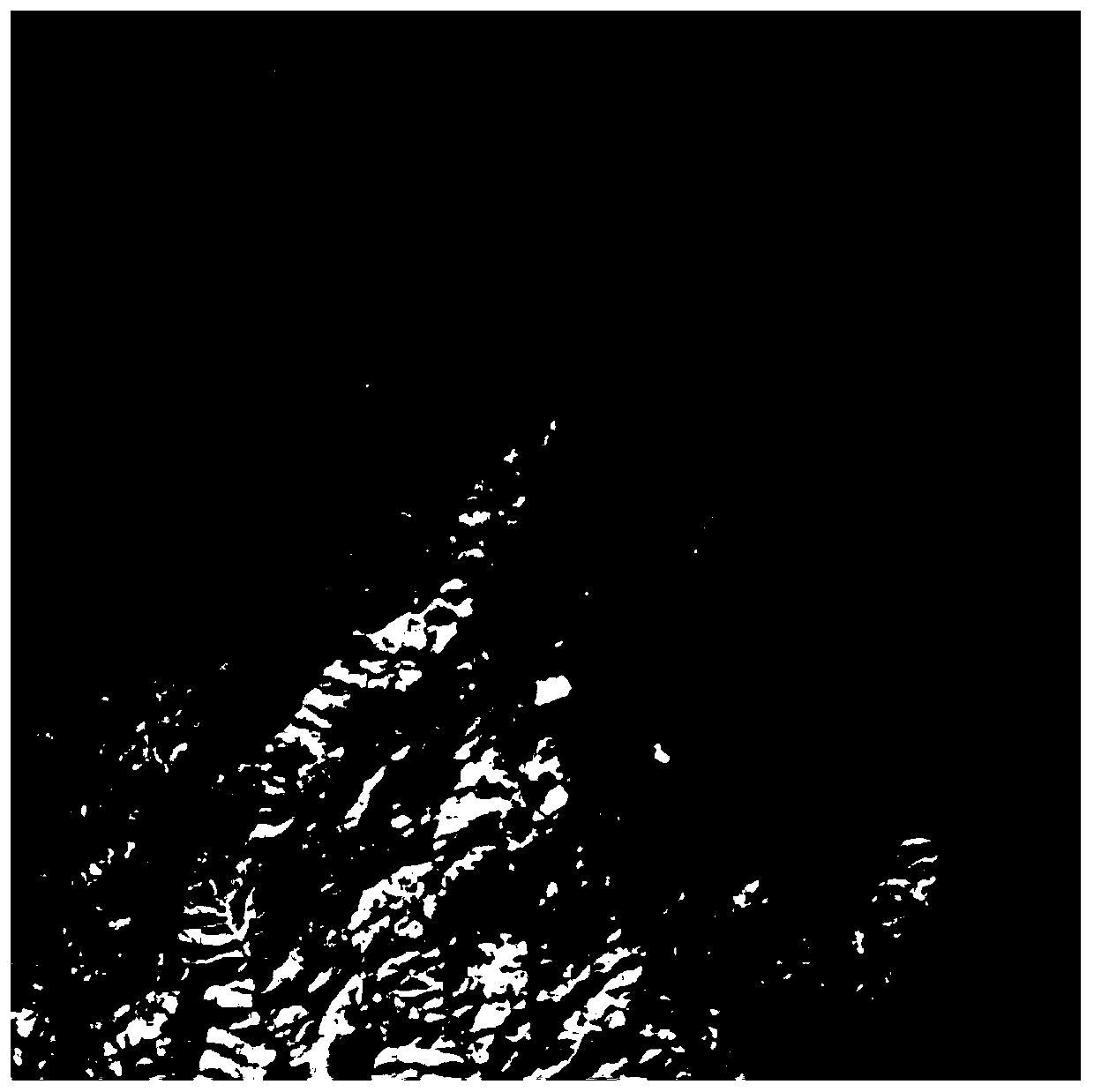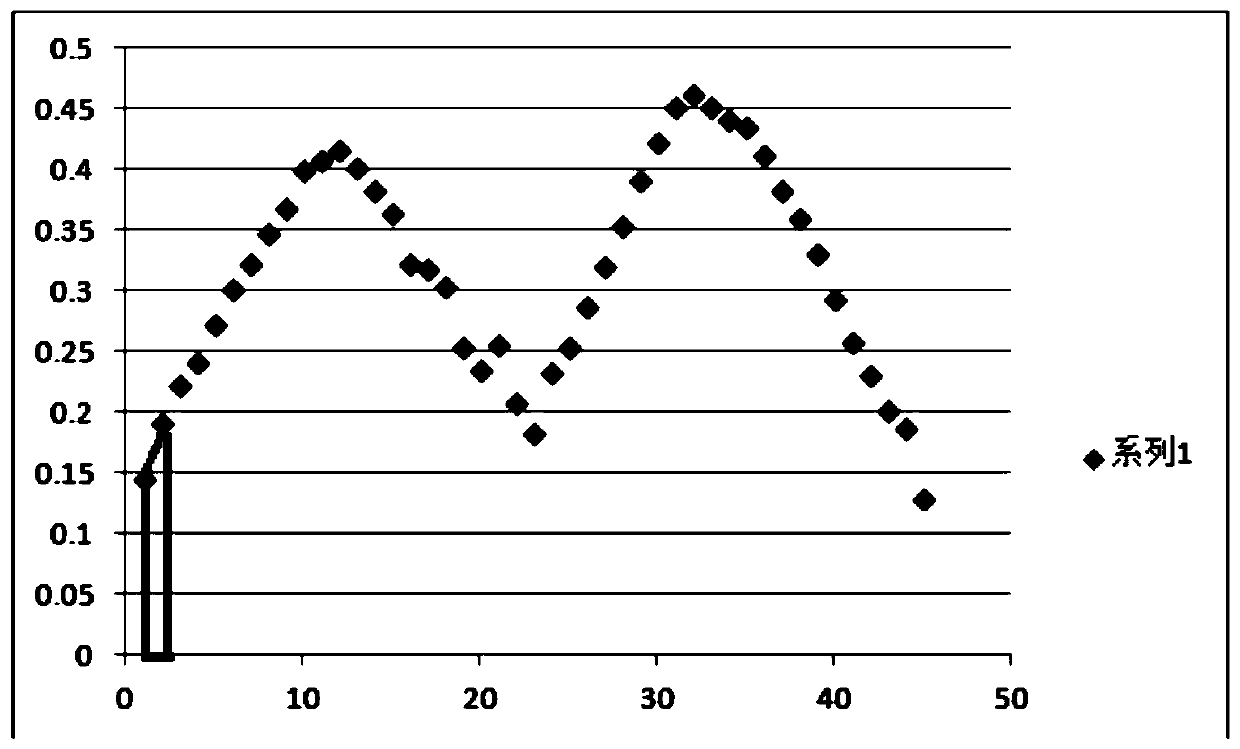Gaussian mixture model-based remote sensing time sequence data fitting method
A Gaussian mixture model and time series data technology, applied in character and pattern recognition, instruments, computer parts, etc., can solve the problems that affect the extraction accuracy of vegetation parameter information, the seasonal change trend is not obvious, and achieve the effect of facilitating vegetation trend analysis.
- Summary
- Abstract
- Description
- Claims
- Application Information
AI Technical Summary
Problems solved by technology
Method used
Image
Examples
Embodiment Construction
[0026] The technical solution of the present invention will be further described below in conjunction with the accompanying drawings.
[0027] A kind of remote sensing time series data fitting method based on Gaussian mixture model of the present invention, such as figure 1 shown, including the following steps:
[0028] Step 1: Obtain remote sensing time series data;
[0029] Prepare multiple remote sensing images of the same area, such as MODIS remote sensing images of 45 scenes with a two-year span at an interval of 16 days. Sure figure 2 The central mark point in the central box is the forest sampling point of this embodiment, and its geographical location is: N30°15′18.95″ north latitude, E120°06′54.32″ east longitude. Read the NDVI values of the 45 remote sensing images in sequence, and organize them into NDVI time-series data in chronological order, as shown in Table 1.
[0030] Table 1
[0031]
[0032]
[0033] Step 2: Estimate the probability value;
[...
PUM
 Login to view more
Login to view more Abstract
Description
Claims
Application Information
 Login to view more
Login to view more - R&D Engineer
- R&D Manager
- IP Professional
- Industry Leading Data Capabilities
- Powerful AI technology
- Patent DNA Extraction
Browse by: Latest US Patents, China's latest patents, Technical Efficacy Thesaurus, Application Domain, Technology Topic.
© 2024 PatSnap. All rights reserved.Legal|Privacy policy|Modern Slavery Act Transparency Statement|Sitemap



